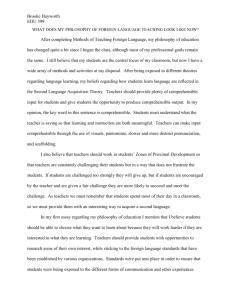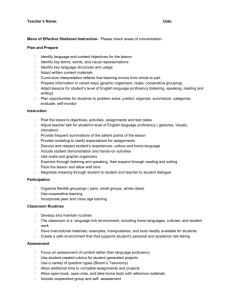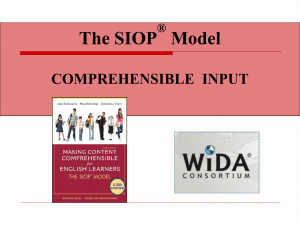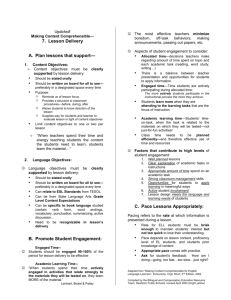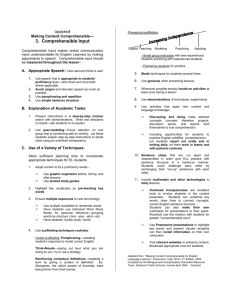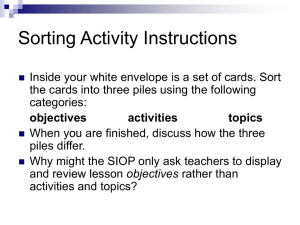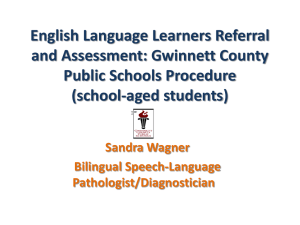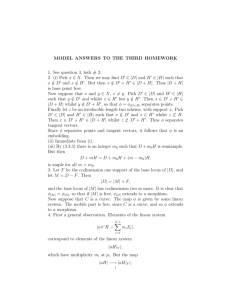SIOP Model: Making Content Comprehensible for ELLs
advertisement
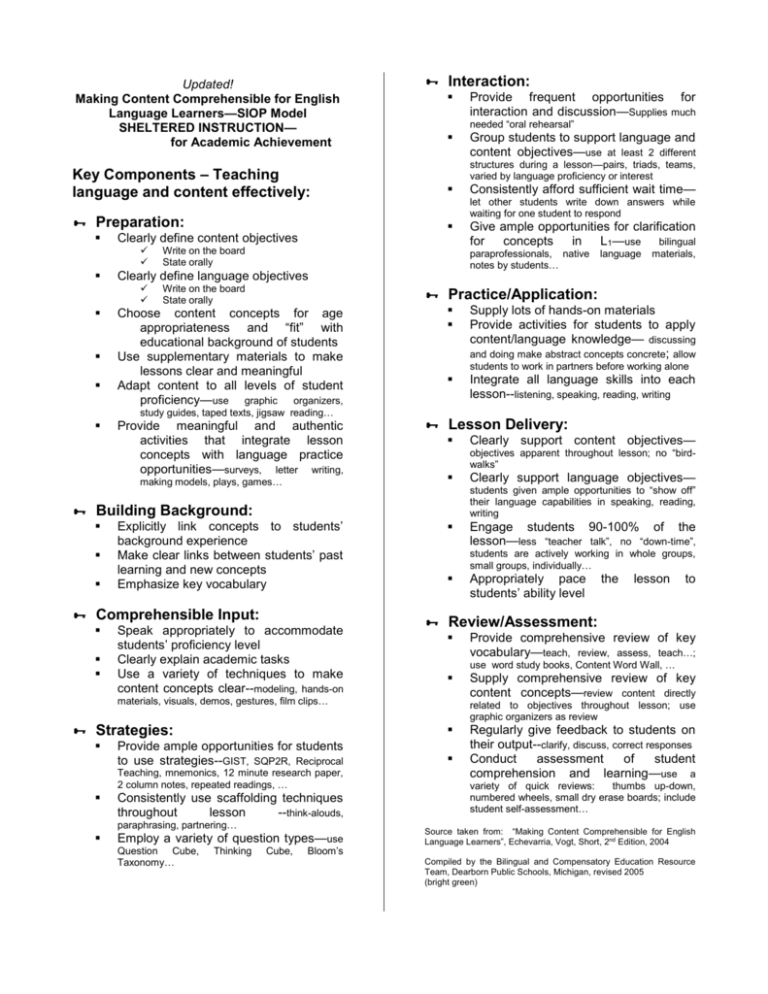
Updated! Making Content Comprehensible for English Language Learners—SIOP Model SHELTERED INSTRUCTION— for Academic Achievement Interaction: needed “oral rehearsal” Preparation: Write on the board State orally Write on the board State orally Choose content concepts for age appropriateness and “fit” with educational background of students Use supplementary materials to make lessons clear and meaningful Adapt content to all levels of student proficiency—use graphic organizers, Provide meaningful and authentic activities that integrate lesson concepts with language practice opportunities—surveys, letter writing, making models, plays, games… Explicitly link concepts to students’ background experience Make clear links between students’ past learning and new concepts Emphasize key vocabulary Speak appropriately to accommodate students’ proficiency level Clearly explain academic tasks Use a variety of techniques to make content concepts clear--modeling, hands-on Strategies: Consistently use scaffolding techniques throughout lesson --think-alouds, paraphrasing, partnering… Employ a variety of question types—use Question Cube, Taxonomy… Thinking Cube, Clearly support content objectives— objectives apparent throughout lesson; no “birdwalks” Clearly support language objectives— Bloom’s Engage students 90-100% of the lesson—less “teacher talk”, no “down-time”, students are actively working in whole groups, small groups, individually… Appropriately pace students’ ability level the lesson to Review/Assessment: Provide comprehensive review of key vocabulary—teach, review, assess, teach…; use word study books, Content Word Wall, … Supply comprehensive review of key content concepts—review content directly related to objectives throughout lesson; use graphic organizers as review Provide ample opportunities for students to use strategies--GIST, SQP2R, Reciprocal Teaching, mnemonics, 12 minute research paper, 2 column notes, repeated readings, … Integrate all language skills into each lesson--listening, speaking, reading, writing Lesson Delivery: materials, visuals, demos, gestures, film clips… Supply lots of hands-on materials Provide activities for students to apply content/language knowledge— discussing and doing make abstract concepts concrete; allow students given ample opportunities to “show off” their language capabilities in speaking, reading, writing Comprehensible Input: materials, students to work in partners before working alone Building Background: language Practice/Application: study guides, taped texts, jigsaw reading… Give ample opportunities for clarification for concepts in L1—use bilingual paraprofessionals, native notes by students… Clearly define language objectives Consistently afford sufficient wait time— let other students write down answers while waiting for one student to respond Clearly define content objectives Group students to support language and content objectives—use at least 2 different structures during a lesson—pairs, triads, teams, varied by language proficiency or interest Key Components – Teaching language and content effectively: Provide frequent opportunities for interaction and discussion—Supplies much Regularly give feedback to students on their output--clarify, discuss, correct responses Conduct assessment of student comprehension and learning—use a variety of quick reviews: thumbs up-down, numbered wheels, small dry erase boards; include student self-assessment… Source taken from: “Making Content Comprehensible for English Language Learners”, Echevarria, Vogt, Short, 2nd Edition, 2004 Compiled by the Bilingual and Compensatory Education Resource Team, Dearborn Public Schools, Michigan, revised 2005 (bright green)



